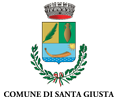<p>Southern Sardinia, and in particular the areas of Sulcis and Iglesiente, is known for its mining centres, originating between the late 19th century and the and fascist period in the wake of the coal rush. The galleries that emerge directly above the sea from sheer cliffs, from where the coal was loaded onto boats, have originated the present-day “Geomining Park” of Carbonia. However, the heavily man-made landscape alternates with breathtaking natural spectacles such as the Sugarloaf Rock severed from the land and the long beaches bordered by dunes and cliffs which serve as a nesting site for the rare Eleonora’s falcon and the pools between Chia and Cape Spartivento, which are home to numerous flamingo colonies. The Campidano plain is characterized by the colours and scents of the large swaths of grain fields which in the south give way to orchards and eucalypti. The best period to visit the area is definitely the summer, when the beauty of the landscape is accompanied by interesting events. In June the town of Tratalias celebrates its patron saint Mary of Monserrato. On the third Sunday of August Villamar stages a charming procession in honour of the Holy Virgin of Itria, which accompanies a coach of the Pistoiese school drawn by oxen from the parish church of San Giovanni Battista to the small country church dedicated to the saint. In September Dolianova features the equestrian parade of S'attobiu de is Parigliantis.</p>
Southern Sardinia appears most varied under a naturalistic point of view: from the fertile hills of Trexenta, rich in olive groves and vineyards, to the mountainous rises of the Sulcis-Iglesiente, rich in mineral ores, through the wetlands comprised in the metropolitan area of Cagliari hinterland, with the lagoon system of Molentargius and Quartu. In such a miscellaneous context, a number of Romanesque monuments are worth a stopover: the churches of San Pantaleo, Dolianova, and of Santa Maria di Sibiola, Serdiana; San Pietro, in Villamar; Santa Maria, Uta; Santa Maria, Tratalias; Sant’Antioco, in the homonymous village, without failing to mention all the evidence of a lesser extent, sited around the town of Cagliari.
![]() Accommodation1748|1749 [2]
Accommodation1748|1749 [2]![]() Art and culture1555 [1]
Art and culture1555 [1]![]() Handicrafts and typical products1531 [1]
Handicrafts and typical products1531 [1]![]() Cultural centres1579 [1]
Cultural centres1579 [1]![]() Cinemas and theatres1603 [1]
Cinemas and theatres1603 [1]![]() Nature and wellness1627 [1]
Nature and wellness1627 [1]![]() Restaurants1675|1676 [2]
Restaurants1675|1676 [2]![]() Leisure1700 [1]
Leisure1700 [1]























